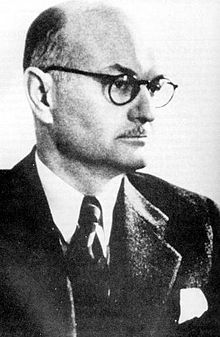Edward C. Tolman
| Edward Chace Tolman | |
|---|---|
 |
|
| Born | April 14, 1886 West Newton, Massachusetts |
| Died | November 19, 1959 (aged 73) Berkeley, California |
| Nationality | American |
| Fields | Psychologist |
| Doctoral advisor | Edwin Bissell Holt |
| Known for | behavioral psychology purposive behaviorism |
Edward Chace Tolman (April 14, 1886 – November 19, 1959) was an American psychologist. Through Tolman's theories and works, he founded what is now a branch of psychology known as purposive behaviorism. Tolman also promoted the concept known as latent learning first coined by Blodgett (1929). A Review of General Psychology survey, published in 2002, ranked Tolman as the 45th most cited psychologist of the 20th century.
Born in West Newton, Massachusetts, brother of Caltech physicist Richard Chace Tolman, Edward C. Tolman studied at the Massachusetts Institute of Technology, and received his Ph.D. from Harvard University in 1915. In 1912 Tolman went to Giessen in Germany to study for his PhD examination. While there he was introduced to and later returned to study Gestalt psychology. Most of his career was spent at the University of California, Berkeley (from 1918 to 1954), where he taught psychology. Tolman's father was a president of a manufacturing company and his mother was adamant of her Quaker background. Tolman attended MIT because of family pressures, but after reading William James' "Principles of Psychology" he decided to abandon physics, chemistry, and mathematics in order to study philosophy and psychology. He enrolled in Harvard and worked in the laboratory of Hugo Munsterburg. James' influence on Tolman could be seen in Tolman's courageous attitude and his willingness to cope with issues that cause controversy and are against the popular views of the time. Tolman always said he was strongly influenced by the Gestalt psychologists, especially Kurt Lewin and Kurt Koffka.
Tolman is best known for his studies of learning in rats using mazes, and he published many experimental articles, of which his paper with Ritchie and Kalish in 1946 was probably the most influential. His major theoretical contributions came in his 1932 book, Purposive Behavior in Animals and Men, and in a series of papers in the Psychological Review, "The determinants of behavior at a choice point" (1938), "Cognitive maps in rats and men" (1948) and "Principles of performance" (1955).
...
Wikipedia
